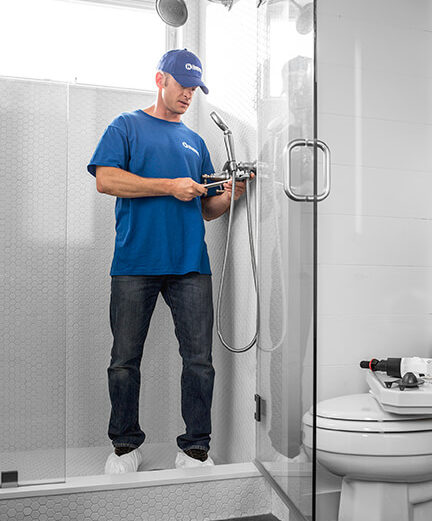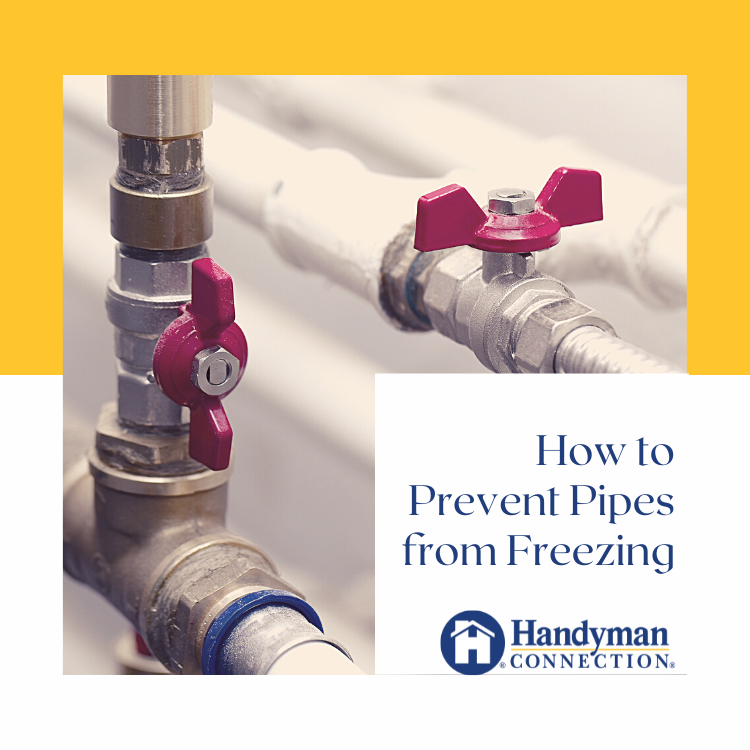We offer a wide range of services for that fresh look, or just maintenance or updates to keep your home functioning and safe. Regardless of the size of the job, we have a craftsman that can tackle it. We offer a wide range of services for that fresh look, or just maintenance or updates to keep your home functioning and safe. Regardless of the size of the job, we have a craftsman that can tackle it.

Plumbing / December 17, 2021

Winnipeg is a beautiful city, and while there are many advantages to living here, cold temperatures in winter can put you at risk for frozen pipes. When water freezes, it expands, exerting thousands of pounds of pressure on the pipe. This can cause the pipe to burst, allowing hundreds of gallons of water to flood your home, requiring not only plumbing services to repair but clean-up to mitigate the water damage.
Any pipes that are in the basement or outside are at particular risk of freezing and bursting. Fortunately, there are simple things you can do to prevent frozen pipes.
The danger of frozen pipes occurs when the weather outside is about -6 degrees Celsius, or 20 degrees Fahrenheit. However, you should take steps to prevent frozen pipes before the temperature gets that cold, preferably in the fall when the weather is still fairly mild. As long as the temperature remains at or above freezing, you shouldn’t stress out over frozen pipes, and if you have taken steps to prevent them, you shouldn’t have to worry about them at all.
If you are planning to leave on a trip during the winter, do not turn the heat completely off while you are gone. If the temperature dips too far during your absence, the pipes could freeze, creating a nasty surprise for you when you get home. That’s not to say that you have to maintain your thermostat at the same level during your trip that you would set it at while you were home. A consistent interior temperature of 12 degrees Celsius (55 degrees Fahrenheit) or higher should be sufficient to prevent the pipes in your home from freezing.
Another tip to prevent frozen pipes while you are traveling is to keep all the interior doors open to allow air to circulate and maintain an even temperature throughout the house. If there is a door to the basement, keep it open as well. As an extra precaution, open the doors to the kitchen and bathroom cabinets that contain pipes. You may also want to do this while you are home when a particularly cold night is forecast.
Openings for cables and utilities, as well as cracks around windows or doors, can allow drafts of cold air to get in. If they lower the temperature sufficiently, they could contribute to freezing pipes. Inspect your home for any of these openings and seal them as necessary. Again, this is a good task to perform in the fall because cooler temperatures may help you feel any drafts of air while the weather outside is still favorable enough to complete the work.
Not all water supply lines go through the garage, but if yours does, it is important to keep the door closed at all times. Garages tend to be cold at baseline because of the materials used to build them. Since they are not living spaces, they do not need to maintain the same temperature as the house. Nevertheless, if you leave the door open, it allows even more freezing air to get in, lowering the temperature of the garage even further and potentially inviting disaster in the form of a frozen pipe.
One of your best defenses against frozen pipes is wrapping your pipes in insulation specifically designed for the purpose. This is made out of materials such as foam, fiberglass, or polyethylene. It is readily available and relatively inexpensive. You should target the pipes that are most vulnerable, such as those that are outside or in unheated interior areas, such as the attic, basement, or garage.
In addition to repair services in Winnipeg, Handyman Connection can also help with the preventive work to prevent your pipes from freezing in the first place. Contact us for a consultation and an estimate.